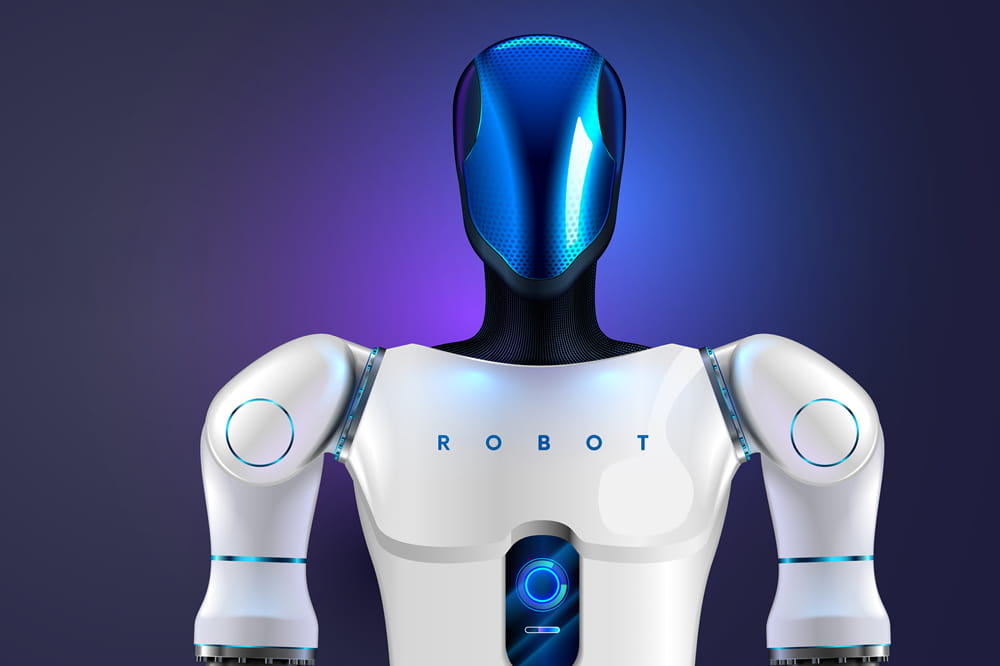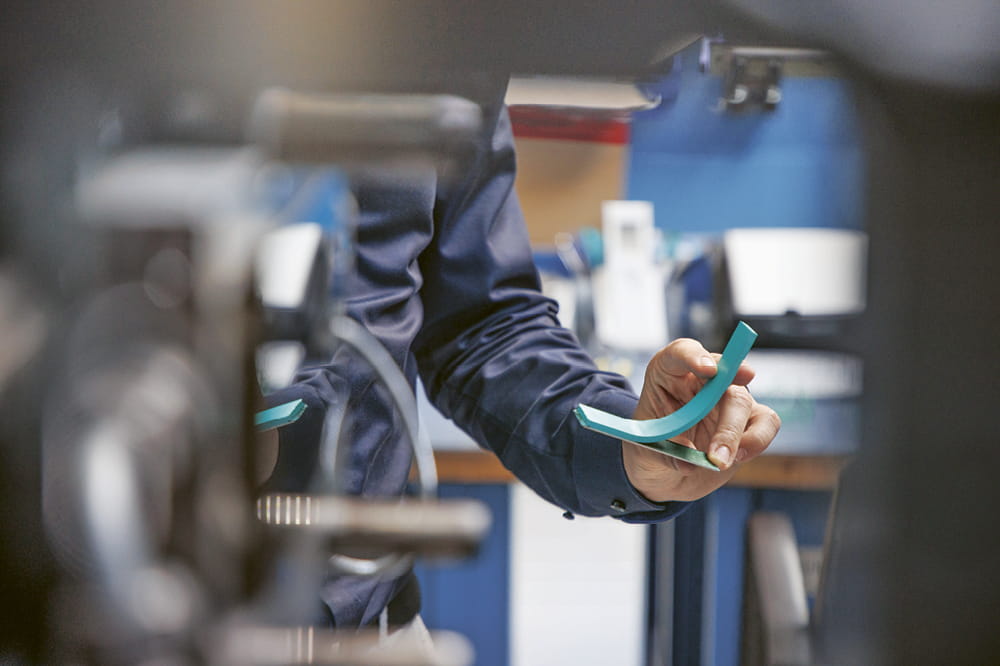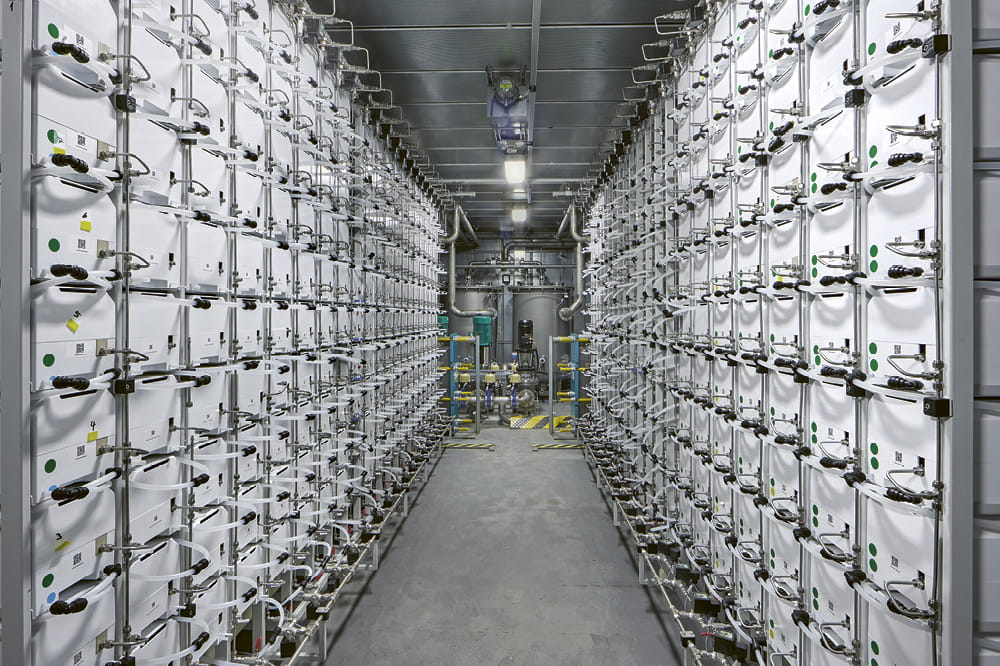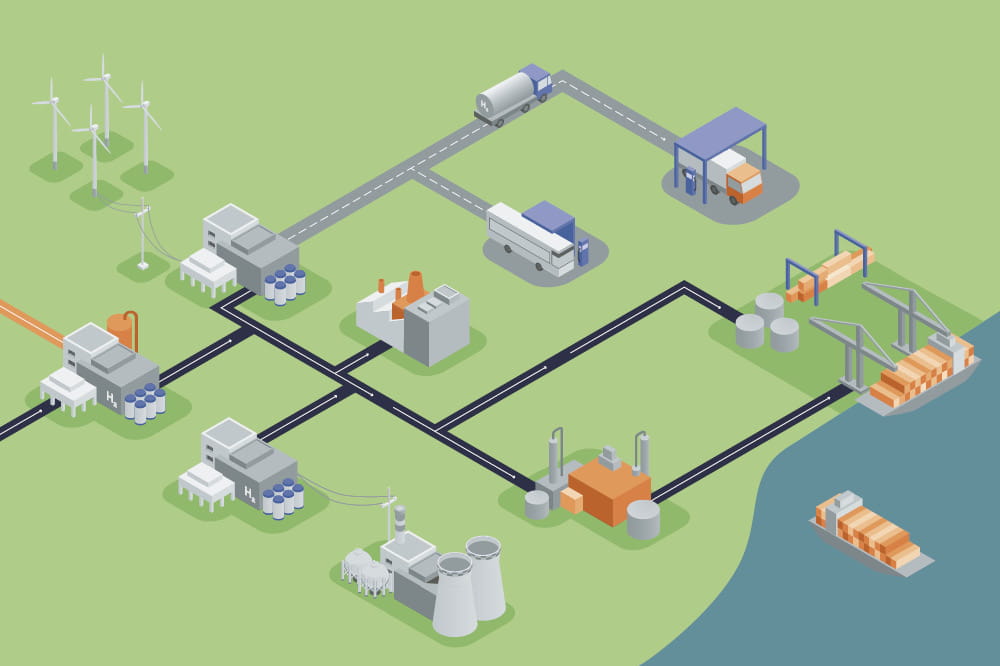Obtain news and background information about sealing technology, get in touch with innovative products – subscribe to the free e-mail newsletter.

AI and Sustainability
Artificial intelligence and sustainability are two of the most critical issues of our time. They are crucial to the economy as well. But how can they be combined?
David Koch is confident that “it will be increasingly normal for companies to use artificial intelligence.” He is a researcher at the Fraunhofer Institute for Manufacturing Engineering and Automation (IPA), specializing in digital sustainability management. “We wondered how companies were already using AI to make improvements in this field. And we wanted to know how businesses could use it in the future,” he said. What emerged was the study “Sustainability through AI – Opportunities and Action Guidelines for Manufacturing Companies.” In it, Koch and his colleagues identify current cases where AI has had a positive impact on sustainability. The study also has recommendations for companies who are considering using AI to meet their sustainability goals.
David Koch
David Koch studied mechanical and industrial engineering as well as environmental science. He has held various positions in development and certification at Daimler Trucks and Mercedes-Benz. In 2022, he moved from practice to theory, becoming a research associate at the Fraunhofer Institute for Manufacturing Engineering and Automation (IPA). The focus of his work and research is on digital sustainability management.
Improving Sustainability
“The companies that we studied are not using AI to improve their sustainability as often as they could. There is still a great deal of unused potential out there,” Koch said. “In any case, using AI is an option whenever high data volumes go hand-in-hand with complex applications.” It is not just a matter of limiting CO2 emissions in environmentally conscious industries. “Sustainability encompasses much more,” he said. It involves the more efficient use of energy, less scrap and better use of resources. “There are many opportunities to improve a company’s sustainability with AI,” Koch said.
The Fraunhofer IPA study cites many cases where the use of AI has helped a company use fewer resources in its operations. For example, AI supports predictive maintenance, that is, the proactive maintenance of machines in manufacturing. The applications help to predict precisely when a machine will need maintenance, or a part will have to be replaced. This results in fewer replacement parts being installed, and unplanned machine shutdowns occurring less often. AI applications are also helping to optimize production processes. For instance, AI can help a machine operator reset parameters when recycled material has to be used in injection molding. This may be needed to meet regulatory requirements. “With the help of AI, a machine can be adjusted to changes in a material’s composition – quickly and during ongoing operations,” Koch said.
Reducing Energy and Resource Use
The study sees still more opportunities for using AI in quality management: Optical monitoring systems in combination with AI-based image processing can quickly detect product anomalies. Quick corrections make it possible to reduce scrap. When used during the planning of manufacturing facilities, AI can help to boost the energy efficiency of production lines. The same is true in logistics, where the new technology is now enabling dynamic route planning. In purchasing, AI can keep an eye on the company’s entire supply chain and predict purchasing risks. This can lead to more stable and flexible supply chains and reductions in resource use.
Koch says that anyone thinking about improving sustainability must first consider two questions: “Is AI really the right tool to solve my problem? And, if yes, do I have enough data in the right form?” Without the right bank of data, AI cannot be trained. “During training, the application has to be fed company data,” he said. “So, the first step is to find out whether there is enough data in a form that AI can process.” If not, it will take a lot of work to get the data structure that the company needs. “The training of AI can only begin when it is in place,” Koch noted.
Measuring Sustainability
How does one measure if AI applications improve a company’s sustainability? The study from Fraunhofer IPA provides some ideas on this: First of all, companies should develop a general sustainability strategy from which concrete goals can be derived. The goals must be analyzed to see which of them can be met with the aid of AI applications. If the decision to use AI is made, there must be an inventory of previous resource use before AI is introduced. Once AI is operational, it is important to track resource use again. The difference shows how effective AI actually is in improving sustainability and whether the goals have been met.
CO2 Emissions from Training
Yet the training itself can be a weakness. Under certain circumstances, the AI application may consume a great deal of energy and cause high CO2 emissions. “Of course, this always depends on the type of application,” Koch said. The models vary in terms of the amount of effort and energy it takes to train them. The training of large, generative AI systems is very resource intensive. “But relatively small applications, focused on a specific area, are mostly used in industry,” he said. “When they are trained, they normally produce no more CO2 emissions than streaming a one-hour video.” So, if you want to cut down on emissions or become more resource efficient by using artificial intelligence, you invariably have to ask yourself: How much CO2 from the use of AI is worth it to me? “These are two entirely different dimensions that cannot be set off against one another very easily,” Koch said.
Greater Energy Efficiency in the Future
But it is clear to Koch that “every company must increasingly consider sustainability issues in its cost-benefit calculations. This will make the use of AI an ever more important consideration.” Koch has a positive attitude about the future, even regarding resource-intensive training. “I am sure that substantial gains in efficiency will emerge from further research – both in processor technology and in the algorithms that are used.” Despite all these prospects, Koch advises companies to act with a sense of proportion. “AI support won’t be needed when there are other easily achievable ways to improve sustainability.” But when all the conditions are met, AI can do a lot to make business more sustainable in the future.
This article originally appeared in ESSENTIAL, Freudenberg Sealing Technologies’ corporate magazine that covers trends, industries and new ideas. To read more stories like this, click here.
More Stories About Sustainability

Join Us!
Experience Freudenberg Sealing Technologies, its products and service offerings in text and videos, network with colleagues and stakeholders, and make valuable business contacts.
Connect on LinkedIn! open_in_new











